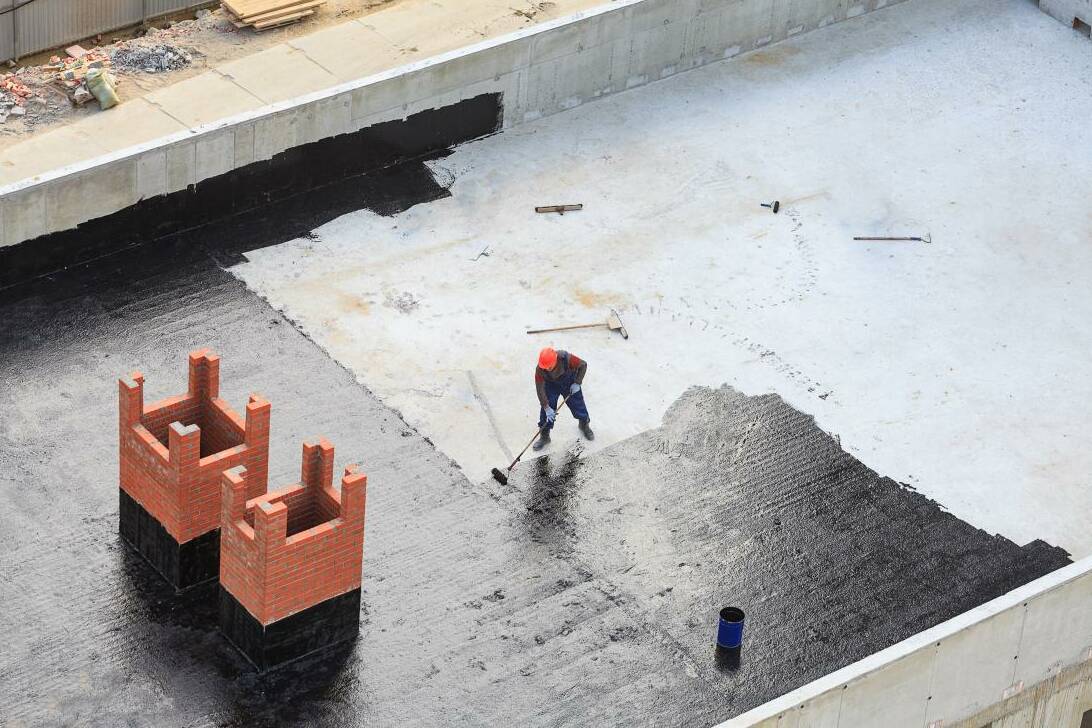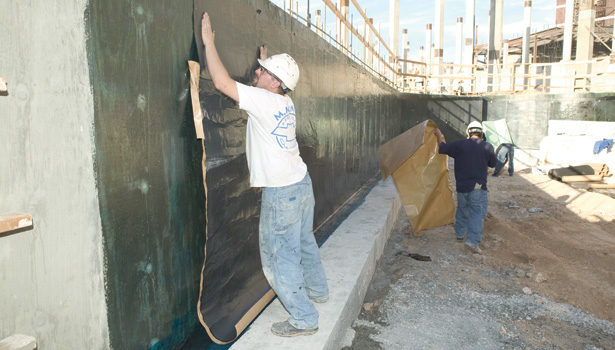Waterproofing Auckland for Beginners
Table of ContentsHow Waterproofing Auckland can Save You Time, Stress, and Money.The smart Trick of Waterproofing Auckland That Nobody is Talking AboutNot known Facts About Waterproofing AucklandThe Of Waterproofing AucklandWaterproofing Auckland Things To Know Before You Get This
45m (18) in diameter, are stocked gradual slopes. The joints of these pipes are kept open. The accumulating chambers are built at suitable periods and at turning points. The accumulating chambers are not glued from the within or outside, to get water from the environments. The perforated pipes are after that covered with loose materials like chips and metal, to create a filter media.The underground water locates the means of least resistance with the filter media. The water is gathered in the perforated pipelines with the filter media.
The treatment for the below ground water tank coincides as that of the basement, besides the adhering to points. An arrangement for a pump sump is made, as opposed to the seamless gutter plan. The overflow pipe lies at the preferred degree, to drain pipes out the excess water. Examine this pipeline for its tightness prior to the waterproofing job treatment.


Waterproofing Auckland Fundamentals Explained
If white or tinted joints are needed, after that the grey concrete joints are raked, and also white cement or shade concrete slurry is used with a little traverse the surface for joints of a coordinating shade. The surface is once again cleansed with sawdust. to remove excess white or color concrete sticking to the polished china mosaic surface area.
Bonus product is reduced off with a putty knife and a smooth upright joint is created. Since the sealer is extremely costly, utilize it.
The outer surface area of the sealer should present a slightly concave surface area in account. Remove the concealing tape and also clean the surface area with suitable solvents. For water-proofing of the straight growth joint, plans need to begin from the R.C.C. phase of the structure. The adhering to treatment must be observed. Inverted beams are taken to the location, for the growth joint, alongside.
Socketing (stress grouting)' is a procedure to grout the cement slurry by stress into the permeable concrete participant. For quiting undiscovered leakages in toilets, balconies, as well as the cellar, this approach is generally utilized. Complying with a series of the job treatment. is observed. Clean the surface area where socketing is to be done.
Some Ideas on Waterproofing Auckland You Need To Know
Deal With 25mm (1) G.I. socket over the steel, utilizing rich concrete mortar around the socket and also steel. If the waterproofing job procedure is not done effectively, it can pose problems. Repair work as well as maintenance of check my reference waterproofing can confirm very frustrating for the user.
is where the maximum water is made use of. Typically, the parent slab of the W.C. system has an I.W.C. Pan and also a concrete situation of size 0. 9m x 1. 2m x 0. 6m. This situation is water-proofed after taking care of the required devices such as P-trap, C.I. piece, W.C. pan, and so on system can indicate the different points of leaks, Resources as listed here. The joint between the C. 1/P. V.C. item as well as P catch. The joint between the (tee) of external vertical pile and P.V.C./ C.I. item. The joint in between the P-trap and I.W.C. pan. The joint in between the flushing pipeline and I.W.C pan. All these joints need to be sealed with the appropriate sealer, at the respective stages throughout the execution of the work.
Additionally, fill all the spaces in the flooring of W.C. with concrete. Examine the joint in between the P-trap and also L.W.C. frying pan from above, by inserting a hand right into the catch. Seal this joint with M-seal, if it is partly open. Check the joint in between the flushing pipeline and also L.W.C. frying pan by damaging just one floor tile, fitted exactly over the joint.
Indicators on Waterproofing Auckland You Need To Know
Open up the "Tee' of the upright stack from the outside, with a ladder or zula and observe the joint of C.I. piece and also Tee' with torchlight and seal it properly. If leak still continues, break open the hidden flushing G.I. pipeline and inspect if it is watertight.
If this does not stop the leakage, break open the total system and inspect the joint at the P-trap and also C.I./ P.V.C. pipe. Do the new waterproofing work procedure completely with utmost treatment. Typically, 90% of leaks quit, if we lug out the repair as specified above, in the first 4 factors.
This can be examined by stopping the operation of the clean hand basin as well as maintaining these lines totally dry as well as running them again after 4-5 days. If the leaks completely dry out as well as begin, the source is through these lines.
Damage open the bathroom waterproofing job treatment and also re-do it thoroughly. An see this page usual and effective technique for dealing with minor leaks is to deal with the afflicted portion with concrete slurry.
The 5-Minute Rule for Waterproofing Auckland
Examine the afflicted portion of the balcony utilizing a wooden mallet and also inspect if it has peeled off. Get rid of the loosened portion with a chisel and also hammer. Re-do it carefully. If the leakage is from the edges or from the parapet wall, after that fill all the splits after damaging it open with cement.
Some chemicals are suggested for combining with concrete, at the time of concreting. The traditional approach of brickbat coba is still the most prominent of water-proofing approach in India. Waterproofing substances are generally available in powder as well as liquid type, as they serve the double purpose of waterproofing job treatment and also heat shielding.
Guarantee that the socketing is done before the base coat work. Make certain that there is no leakage from the bathroom W.C. piece once the socketing is done. Guarantee that the catches and also launch pipes are taken care of correctly prior to the brickbat coba coat. Make sure that all the brickbats are well-soaked in water, before use.
Ensure that the water-proofing compound is mixed in the mortar, for every stage of work. The topcoat must be lugged out in one stroke, without any kind of joints.